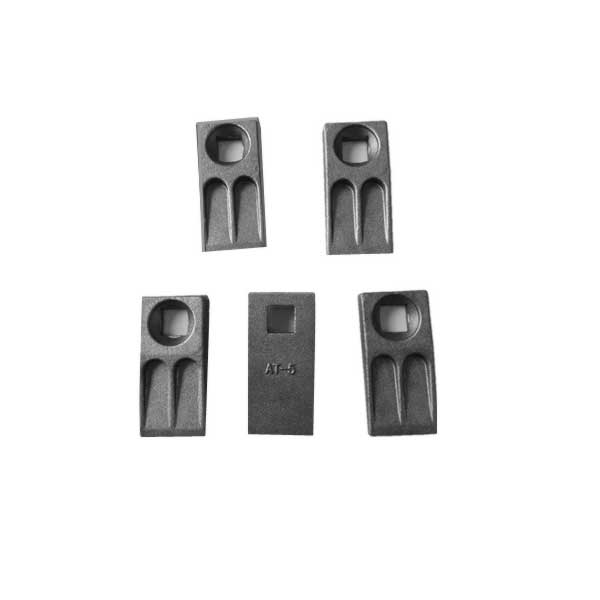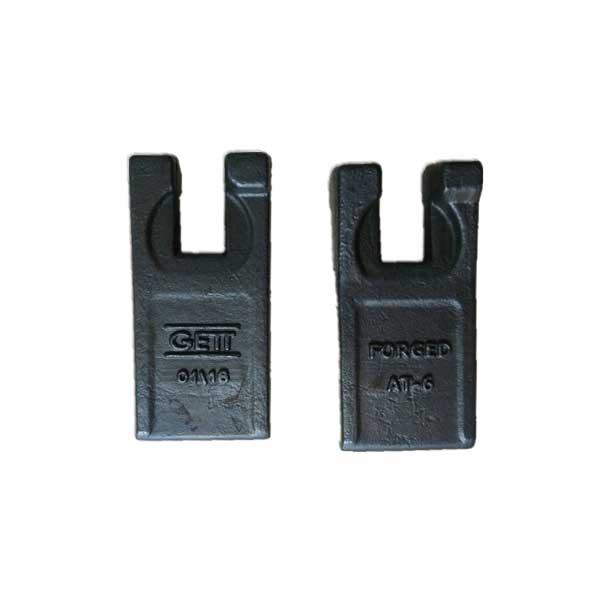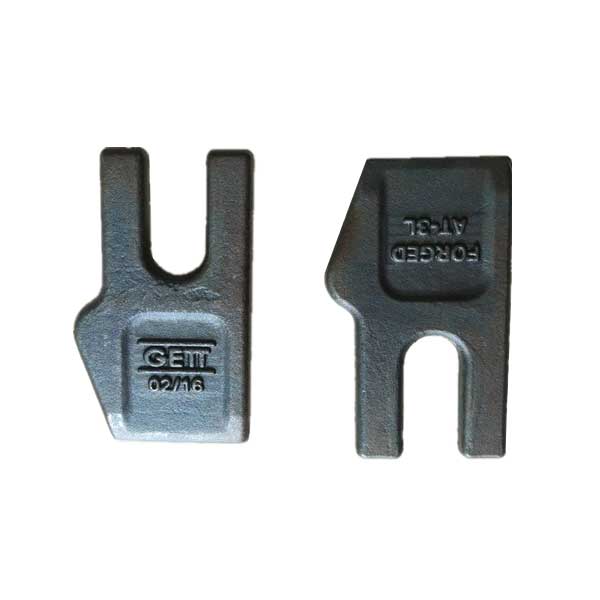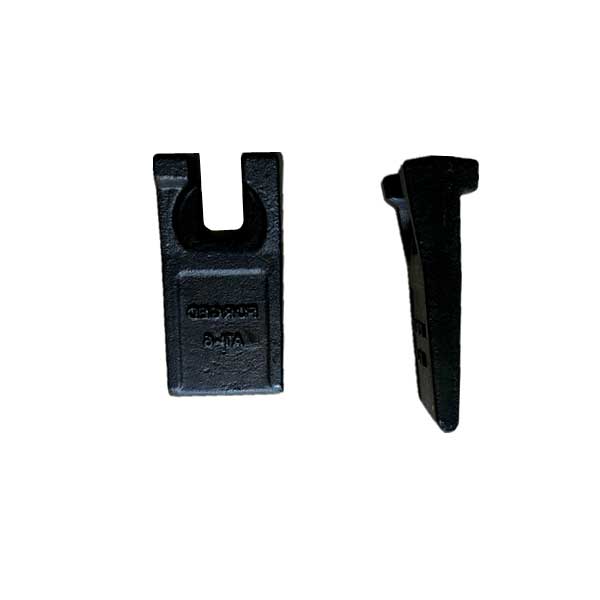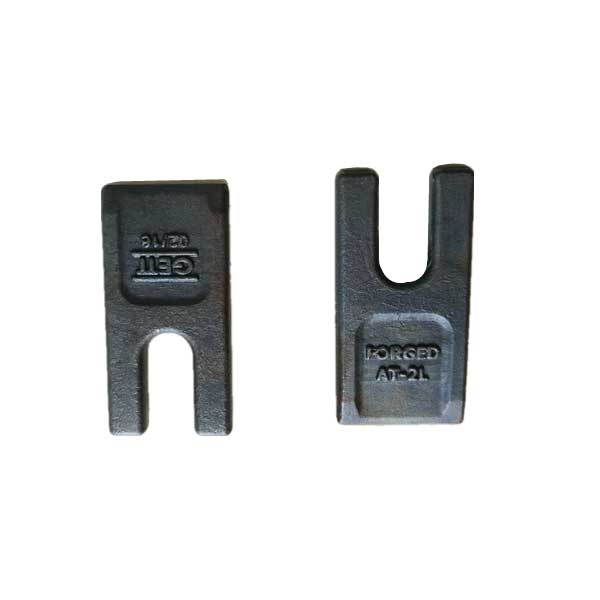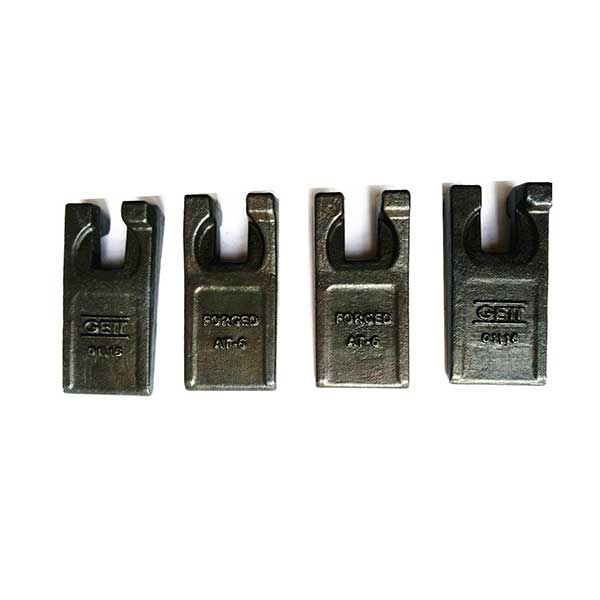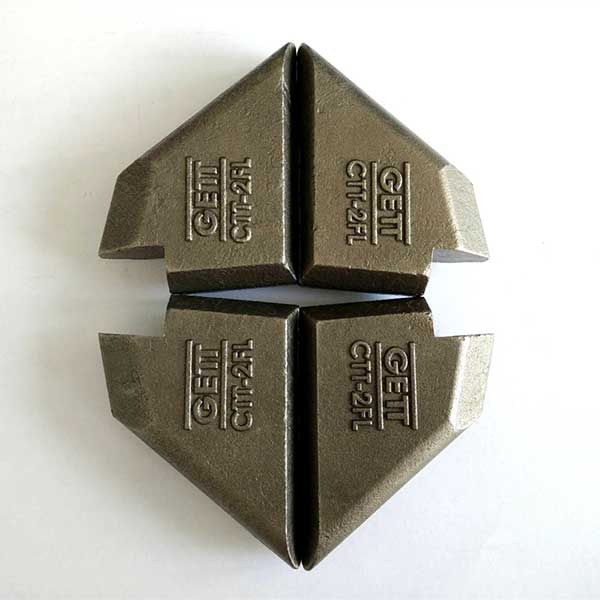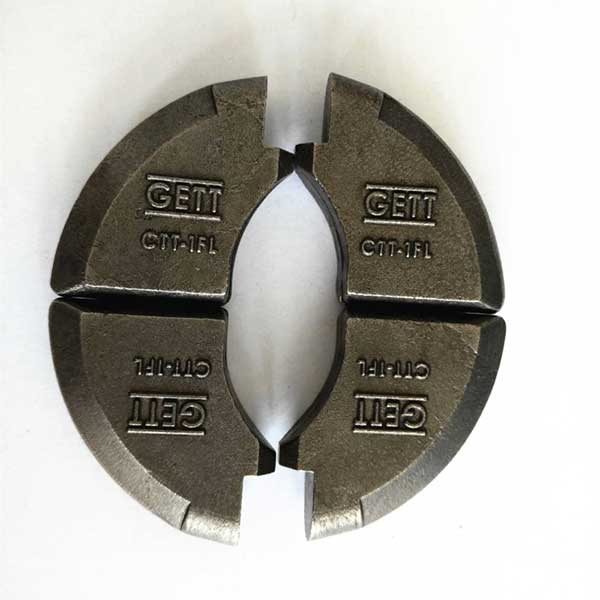1) Die forging die
(1) Pre-forging die. The effect of the pre-forging die is to deform the blank to a shape and size close to that of the Auger excavation tooth forgings, so that in the final forging, the metal easily fills the die to obtain the size required for the forging. For forgings of simple shape or when the batch size is small, the pre-forging die is not required. The fillet and pitch of the pre-forging die are much larger than the final forging die and there is no flash groove.
(2) Final forging die. The function of the final forging die is to deform the blank to the shape and size required by the Auger excavation tooth forgings. Therefore, its shape should be the same as the shape of the forged piece; however, the size of the final forging die is required because the forging is to be cooled when it is cooled. A contraction amount should be enlarged compared to the forging size. Steel forgings shrink by 1.5%. In addition, there are flash grooves around the die to increase the resistance of the metal from the die, to cause the metal to fill the die while accommodating excess metal.
2) The blank mold
For the Auger excavation tooth forgings of complex shape, in order to make the shape of the blank substantially conform to the shape of the forging, so that the metal can be reasonably distributed and well filled with the mold, it is necessary to preform the preform in the blank mold.
(1) Pull out the long die. It is used to reduce the cross-sectional area of a part of the blank to increase the length of the part. The long die is divided into open and closed.
(2) Rolling the die. It is used to reduce the cross-sectional area of a portion of the blank to increase the cross-sectional area of the other portion so that the metal is distributed in the shape of an Auger excavation tooth forgings. Rolling die is divided into open and closed.
(3) Bending the mold. For curved rod die forgings, a curved die is used to bend the blank.
(4) Cut the mold. It forms a pair of edges on the corners of the upper and lower dies to cut the metal.
Advantages of die forging: high production efficiency. During die forging, the deformation of the metal is carried out in the die, so that the desired shape can be obtained quickly; the forgings with complicated shapes can be forged, and the metal flow line distribution can be made more reasonable, and the service life of the parts can be improved; the size of the die forgings More accurate, better surface quality, less processing allowance; save metal materials and reduce the amount of cutting work. The part cost can be reduced under sufficient batch conditions.
Disadvantages and limitations of die forging: The weight of die forgings is limited by the ability of general die forging equipment, mostly below 7OKg; the manufacturing cycle of forging die is long and the cost is high; the investment cost of die forging equipment is larger than that of free forging.

